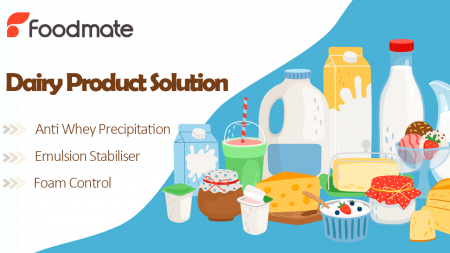The Food Gelatin Industry Overview (Source: GrandViewResearch)
The Food gelatin segment currently accounts for a 31.4% share of the global Gelatin market.
This share is anticipated to increase to 24.16% in the year 2022. The total market is projected to reach a volume of 157.8 thousand metric tons by the year 2027.
Food Gelatin Market Trends, Threats & Growth Drivers
The global market for gelatin is expected to reach USD 6.7 Billion by 2027, at a CAGR of 9.2% between 2020 and 2027. It was standing at 2.6 Billion in 2018, and 3.1 Billion in 2019. The global market for the Food Gelatin is expected to grow at a CAGR of 5.1% from 2020 to 2027.
The increase in demand for food gelatin can be attributed to the rising consumption of various food products in the world, especially in developed economies. Additionally, the increasing use of the product in bakery and confectionery products to make desserts and cakes is anticipated to drive the demand of the Food Gelatin Market.
Furthermore, the production of the Food Grade Gelatin is expected to witness substantial growth owing to the increasing demand for edible gelatin in the emerging economies. Moreover, the high degree of unsaturated fatty acids, high protein content, and the easy availability of food gelatin are the major factors expected to boost the market growth.
The market players are adopting various strategies to gain a competitive advantage in the market. For instance, in 2019, FMC Biopolymer developed a new manufacturing process to produce food-grade gelatin for the food and beverage industry. In 2016, the FMC Biopolymer launched a new product that includes a lower level of sulfates and a low level of heavy metals. In 2018, The FMC Biopolymer received ISO 13485:2012 certification. The ISO 13485:2012 is a standard for quality management systems in the pharmaceutical sector. The Company also received FDA registration in 2018.
Growth:
- Increasing demand for food gelatins across the globe due to rising awareness about the health benefits of gels.
- The growing use of gels in functional foods and beverages, which includes milk and dairy products.
- Increasing demand for low-fat foods.
- The use of new processing technologies for developing gels will lead to increased demand for gels in various industries.
- Use of gels in food supplements and sports drinks.
- Use of natural and novel gels in beverages and other food products.
- Use of food gelatins in cosmetics, pharmaceuticals, and the food industry.
Issues:
- High cost of gels, especially for functional food products.
- Increased use of synthetic gels, which are cheaper and easy to store and transport.
- Lack of awareness among consumers about food gelatins. This leads to a lack of awareness of the health benefits of gels and the need for these products.
- The inability of manufacturers to produce gelatins from raw materials.
- Limited availability of raw materials for producing gels, which in turn affects the supply of the final product.
- Increasing demand for low-fat food products may lead to increasing demand for gels, which may lead to a rise in prices.
Food Gelatin Market Segmentation by Region
- The Gelatin market in the U.S. is estimated at 115.7 Thousand Metric Tons in the year 2020. The country currently accounts for a 23.04% share of the global market.
- The Gelatin market in China currently accounts for a 35.3% share of the global market. The country currently accounts for a 31.48% share of the global market. This share is anticipated to decrease to 27.58% by the year 2022. The market is expected to reach a volume of 107.5 thousand metric tons by the year 2027.
- The Gelatin market in Japan currently accounts for a 30.6% share of the global market. The country currently accounts for a 29.97% share of the global market. This share is anticipated to increase to 31.46% by the year 2022. The market is expected to reach a volume of 119.7 thousand metric tons by the year 2027.
- The Gelatin market in Germany currently accounts for a 25.7% share of the global market. The country currently accounts for a 25.01% share of the global market. This share is anticipated to decrease to 23.92% by the year 2022. The market is expected to reach a volume of 99.1 thousand metric tons by the year 2027.
- The Gelatin market in Russia currently accounts for a 20.2% share of the global market. The country currently accounts for a 22.05% share of the global market. This share is anticipated to increase to 23.53% by the year 2022. The market is expected to reach a volume of 100.9 thousand metric tons by the year 2027.
Food Gelatin Market Segmentation by Application
The food Gelatin market is segmented on the basis of type, application, and geography. The market is further segmented into types such as meat & fish, dairy, fruit, vegetable, and others. Based on the application, the market is further divided into the bakery, beverages, dairy, snacks, meat, and others. The market is also categorized on the basis of geography into the Americas, Europe, Asia-Pacific, and the rest of the World.
Food Gelatin Market Size and Volume Analysis
The Asia-Pacific region is expected to hold a dominant position in the Food Gelatin market by the end of the forecast period. According to the Food & Nutrition Board, the Asian population is the second largest population in the world after the European population. The population in the APAC region is predicted to rise to 7.5 billion by 2050. This is primarily because the region is the world’s most populous continent and is projected to surpass Europe and the Middle East.
Moreover, the government policies in the Asian countries are expected to support the growth of the Food Gelatin market in the APAC region. For instance, in 2018, the Japanese government announced a plan to promote gelatin consumption to help reduce the number of obese people. In addition to this, the government of Japan has launched a campaign to increase the number of people who eat gelatin. Moreover, the government has provided subsidies and tax benefits for the development of the Food Gelatin market. For example, in 2019, the Japanese government offered a subsidy to the manufacturers of gelatin to improve the quality of the product.
Porter’s Five Forces Analysis of the Gelatin Industry
Competitive Rivalry
The analysis shows that the competitive rivalry in the Food Gelatin market is moderately intense. The presence of many firms within the market is the main reason for intense rivalry among the key players in the Food Gelatin market. The top three players in the US market include Gist Gelling Agent, The Gel Company, and Gelation, Inc.
Supplier Differentiation
The study reveals that suppliers differentiate themselves based on their manufacturing technology and capacity, as well as the range of products offered. The leading companies in the market are offering differentiated products with features and functional properties, which help them to gain a competitive edge over their competitors.
The market is characterized by high product differentiation, where the key product attributes such as product quality, safety, functionality, and price are important in attracting consumers to choose one brand over another.
Buyer Power from Customers
The study indicates that the leading firms in the Food Gelatin market are acquiring strategic alliances, joint ventures, and mergers & acquisitions to increase their reach and strengthen their foothold in the market.
The Threat of Substitute Products and Services
The Food Gelatin market is highly sensitive to the threat of substitutes. The threat of substitutes refers to the possibility that products similar to the original product in the market may emerge to compete with it. The substitutes in the Food Gelatin market are mainly synthetic gels.
Potential New Entrants in the Industry
The Food Gelatin market has witnessed a significant growth rate, which is attributed to increasing awareness regarding the health benefits of gels. Increasing consumer demand for natural and health products and an increase in demand for food gelatins, which is a major category of the gel market, are expected to drive the demand for gels in the coming years.
The growing demand for meat gelatin in processed foods, increasing meat and poultry consumption, and the increasing awareness regarding the usage of meat gelatin in processed foods are major factors driving the growth of the US food gelatin market. The US food gelatin market has been witnessing significant growth in the past few years owing to the increasing consumer awareness regarding the usage of meat gelatin in various food applications.
This may lead to the possibility of the emergence of new players in the market, which may eventually hamper the growth of the market.
Note: The Data utilized in this content is amalgamated and bifurcated using stats from grandviewresearch and industryarc.




-1-450x253.jpg)
 Whatsapp
Whatsapp